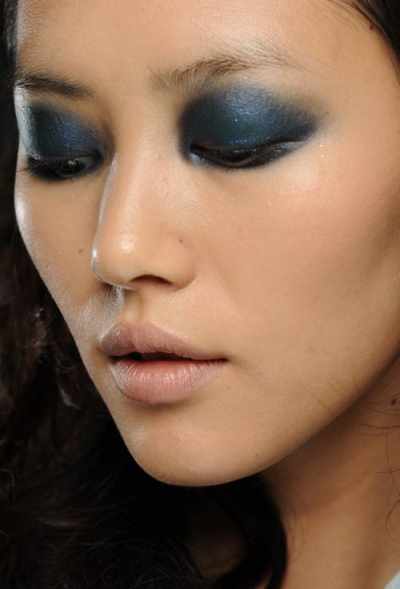 Este uimitor cât de multe poţi învăţa de la părul unei femei. Biologic vorbind, nu există niciun motiv pentru ca majoritatea bărbaţilor să nu poată avea părul la fel de lung ca femeile. Şi totuşi, cu excepţia câtorva subgrupuri culturale (cum ar fi muzicienii rock), nu e niciodată aşa. De ce?
Este uimitor cât de multe poţi învăţa de la părul unei femei. Biologic vorbind, nu există niciun motiv pentru ca majoritatea bărbaţilor să nu poată avea părul la fel de lung ca femeile. Şi totuşi, cu excepţia câtorva subgrupuri culturale (cum ar fi muzicienii rock), nu e niciodată aşa. De ce?În ciuda relevanţei părului, nu există cercetări suficiente despre cât de important este acesta în cultura noastră modernă. Singurul lucru foarte cunoscut este că în unele ţări musulmane femeile trebuie să-şi acopere părul. Acest obicei este valabil şi în unele biserici creştine, dar altfel, femeile din România pot purta părul în orice fel doresc, lung sau scurt, vopsit sau nu, coafat scump sau nu. Şi totuşi, dacă aţi observa îndeaproape, poţi învăţa o mulţime de lucruri privind părul femeilor.
Uitaţi-vă la orice femeie mai în vârstă, poate de 60 de ani sau mai mult. Cât de lung este părul lor? Invariabil, destul de scurt. Aproape fiecare femeie mai în vârstă pe care o veţi vedea vreodată are părul destul de scurt. Uneori, acest lucru are o cauză genetică (părul lor este prea subţire sau fragil ca să crească lung), dar se pare că femeile în vârstă păstrează universal părul destul de scurt. De ce?
Deşi în România este încă destul de rar să te declari public lesbiană, acest lucru deste destul de comun în unele părţi din Statele Unite ori în alte ţări. Şi este destul de interesant să observi că multe lesbiene, chiar şi cele mai tinere, au părul scurt, deşi nu este obligatoriu. De ce?

În termeni simpli, părul unei femei este adesea un indiciu despre disponibilitatea ei sexuală faţă de bărbaţi, adică disponibile pentru reproducere. O femeie cu păr lung, în general, dă un semn că este disponibilă sexual faţă de bărbaţi. O femeie mai în vârstă (ajunsă la menopauză) sau unele lesbiene îşi poartă părul scurt pentru a indica exact opusul – că nu sunt disponibile sexual pentru bărbaţi.
Să ai grijă de un păr lung este destul de costisitor, şi ca bani, şi ca timp. Toate şampoanele, balsamurile, gelurile, tratamentele, tunsul, uscătoarele pentru păr, costă. Şi cu cât mai lung e părul, cu atât creşte şi consumul de timp ca să-l speli, usuci, piepteni ori să-l aranjezi. Dar toate acestea sunt o adevărată investiţie cu un singur scop şi o singură recompensă – un păr lung, cu firul gros, indică o femeie fertilă şi, prin urmare, sexy şi atractivă pentru bărbaţi.
Şi culoarea părului unei femei îţi poate spune multe despre ea. O femeie care se vopseşte pentru a-şi ascunde firele albe este evident că încearcă să-şi ascundă astfel vârsta şi să pară mai tânără. Dar o femeie care se vopseşte într-o nunaţă de roşu trece de obicei printr-o perioadă în care îşi afirmă puterea şi independenţa. Îşi trebuie un anumit grad de curaj să-ţi faci părul roşu şi femeile foarte timide nu pot face acest lucru.
Multe femei se fac blonde din două motive. Unul ar fi ca să arate mai tinere, ştiind că blonzii par mai tineri decât vârsta lor reală. (O teorie susţine că multă lume (albii) are părul blond în copilărie, dar cu înaintarea în vârstă acesta se închide la culoare, devenind şaten sau chiar negru.) Şi al doilea motiv este că părul blond străluceşte mai puternic decât cel şaten şi astfel femeile devin mai vizibile. De aceea multe femei care simt că NU primesc suficientă atenţie se vopsesc blonde chiar în acest scop.
În afară de culoare şi lungime, stilul în care o femeie îşi poartă părul poate spune multe. Dacă nu se simte “sexy” sau nu vrea să fie atractivă, o femeie îşi va “ascunde” părul într-un fel, sub o pălărie sau o şapcă sau, poate, legat într-un fel de coadă sau prins în coc la spate. În felul acesta diminuează şi lungimea, şi volumul părului. Invers, atunci când o femeie vrea să fie cât mai atractivă şi sexy cu putinţă, va purta părul liber, cât mai înfoiat şi mai lung.
Data următoare când mergi pe stradă în spatele unei femei, uita-te la părul ei şi vezi cât de multe poţi spune despre ea. Este scurt şi alb, semn că este post-menopauză şi nu mai e fertilă? Este lung şi lăsat liber, indicând că este tânără, sănătoasă şi are cea mai atractivă vârstă sexuală? Este vopsit într-o nuanţă stralucitoare de blond sau este lăsat natural, într-o nuanţă de şaten deschis foarte comun? Este bogat şi lăsat liber la vedere sau înghesuit sub o pălărie ori strâns în vreun alt fel cu o bandă elastică?
Fără a dezvălui prea mult din trecutul meu, obişnuiam să-mi sfătuiesc prietenii bărbaţi în legătură cu fetele pe care să le abordeze într-un bar sau o discotecă. Dacă tânăra avea părul scurt sau lung, dar “ascuns” într-un fel, le spuneam să nu-şi piardă vremea încercând să le cunoască. Tot ce făceam era să le traduc semnalele biologice inconştiente pe care aceste femei le transmiteau.
Cu ani în urmă, am lucrat în secţia de cancer a spitalului local. Multe dintre tratamentele de combatere a cancerului provocau căderea părului şi pacienţii deveneau temporar chei. Interesant a fost că femeile erau nu se mai considerau deloc sexy fără păr, chiar şi atunci când toate celelalte caracteristici fizice rămăseseră intacte. În schimb, părul lung la bărbaţi este adesea considerat ca “feminin” şi nicidecum sexy şi mulţi dintre cei consideraţi ca fiind cei mai sexy bărbaţi din lume sunt complet chei.
Aşadar, ce spune părul tău despre tine, doamnă?
What a Woman’s Hair Says About Her
It is pretty surprising just how much you can learn from a woman’s hair. Biologically speaking, there is no reason that most men could have hair equally as women do. And yet, except for in a few cultural subgroups (such as rock musicians), this is never the case. Why?
Despite the relative importance of hair, there hasn’t been a lot of research done on just how important it is in our modern culture. About the only thing most people know is that in some Muslim countries, women must cover their hair. This is also true in certain Christian churches but otherwise women can have their hair any way they want to in Romania, long or short, vopsit or not vopsit, expensively arranged or not. And yet, if you observe closely, there is a lot you can learn from women’s hair.
Look at any older woman, perhaps 60 years old or older. How long is their hair? Invariably it’s quite short. Nearly every single elderly woman you will ever see has quite short hair. Sometimes this may be due to genetics (their hair is too thin or brittle to grow long) but it seems that older women universally keep their hair quite short. Why?
Although being openly lesbian is still quite rare in Romania, it is fairly common in some parts of the United States and other countries. And while it is not “obligatoriu”, it is quite interesting to note that many openly homosexual women, even younger ones, have short hair. Why?
Quite simply put, a woman’s hair is often a signifier about her sexual availability towards men, that is to say available for reproduction. A woman with long hair, generally speaking, is giving a sign that she is sexually available towards men. An older woman (who has reached menopause) or some lesbians wear their hair short to indicate the opposite – they are not sexually available for men.
Taking care of long hair is rather expensive, both in terms of monetary costs as well as time. All those shampoos and conditioners and gels and other hair treatments cost money, as do haircuts and hair dryers. The longer your hair is, the more time it takes to wash, to dry it and to comb or brush it. This is quite an investment and it has a unique reward – thick, longer hair indicates a woman is fertile and therefore sexy and attractive towards men.
The color of a woman’s hair also can tell you a lot about her. A woman who dyes her hair to hide gray hairs obviously is trying to disguise her age and look younger. But a woman who dies her hair a shade of red is usually going through a period where she is asserting her power and independence. It takes a certain degree of courage to have red hair and very timid or shy women cannot do it.
Many women dye their hair blonde for a couple of reasons. One is to look younger, as people with blonde hair appear younger than their true age. One theory behind this is that many (white) people have blonde hair when they are young children but as they age it grows darker and becomes brown or black. Blonde hair is also a brighter color than brown hair and so gets noticed because of that. Many women who feel they are NOT getting enough attention dye their hair blonde precisely to get noticed more.
Besides color and length, the style in which a woman wears her hair can tell you a lot. If she’s not feeling “sexy” or doesn’t want to quite so attractive, a woman will “hide” her hair in some way, possibly under a şapca or other hat or perhaps tied in some kind of tail or knot behind her. This minimizes the length and volume of her hair. Conversely, when a woman wants to be at her MOST sexy and attractive to men, she will wear her hair “down” with its length and volume maximized in some way.
The next time you are walking down the street and see a woman in front of you, look at her hair and see how much you can tell about her. Is her hair short and white, thereby indicating that she is post-menopausal and no longer fertile? Is it long and freely displayed, thereby indicating she is young, healthy and at her most sexually attractive age? Is it dyed a bright shade of blonde or is it left to be an ordinary shade of light brown? Is her hair loose and abundantly visible or is it tucked away in a hat or elastic band in some way?
Without revealing too much of my past, I used to advise my male friends on which girls to approach when we were in a bar or disco. If the young women had short hair or hair that was “hidden” in some way, either tied into a tail or something else, I told my friends not even to waste their time approaching those girls. All I was doing was explaining the usually unconscious biological signals these women were giving off.
Years ago, I used to work in the cancer ward of the local hospital. Many of the treatments to fight cancer cause the patients to lose all of their hair and become (temporarily) bald. It was interesting that it was the female patients who universally felt that they were completely unsexy when they were bald, even when all of their other physical features remained exactly the same. Conversely, long hair is often considered “feminine” and not sexy for men and many of the world’s sexiest men are completely bald.
What does your hair say about you?
Citiţi şi
8 moduri prin care să-ți faci viața mai frumoasă. Cu exemple
Acest articol este protejat de legea drepturilor de autor. Orice preluare a conținutului se poate face doar în limita a 500 de semne, cu citarea sursei și cu link către pagina acestui articol.































